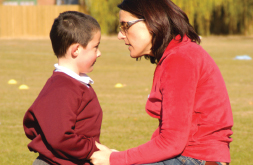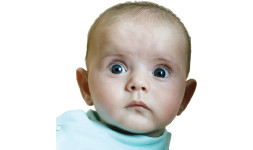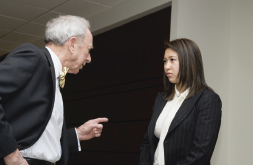Eye Behavior
Despite differing cultural norms regarding direct eye contact, it remains an important part of giving speeches and succeeding in job interviews in the United States. In both situations, eye contact signals respect for your audience and confidence in your abilities and preparedness. You learn more about the challenges of eye contact, and how to move past them, in Chapter 14 and the Interviewing Appendix.
When Rooney Mara portrayed Lisbeth Salander in the film adaptation of The Girl with the Dragon Tattoo (2011), she learned to move and gesture in ways to convey the hurt and fury her avenging character experiences. But Mara said that her character’s eye behavior was particularly hard to master. Contrary to the norms of interaction, Salander never looks into the face of others, keeping her gaze downcast or sideways (Ryzik, 2012). Oculesics is the study of the use of the eyes to communicate—
Newborn infants (two to five days old) stare significantly longer at faces offering a direct gaze rather than an averted one. The babies orient themselves more often toward the face that makes eye contact with them. Babies as young as three months old smile less when adults avert their gaze and begin smiling more when adults resume eye contact (Farroni, Csibra, Simion, & Johnson, 2002).
There are some cultural variations in gazing with children. For example, European American parents gaze more at their children, especially between mothers and sons. Mexican American parents, on the other hand, spend less time making eye contact with children. Accordingly, children gaze more directly at fathers in European American homes than in Mexican American homes (Schofield, Parke, Castañeda, & Coltrane, 2008). Perhaps children in Mexican American homes gaze less directly at fathers as a sign of respect for the cultural hierarchy in the family.
The human gaze remains important beyond childhood. You use direct eye contact with a hiring manager in a job interview in the United States to make a stronger impression. In more personal relationships, you look at a friend differently than you look at your significant other and very differently from someone you dislike intensely. Each glance can send a message of liking, loving, attraction, or contempt (see Table 4.1).
TABLE 4.1 THE POWER OF EYE CONTACT
| Function of Eye Contact | Image | Example |
|---|---|---|
| Influences attitude change |

|
Looking at someone to get the person to trust you or comply with your wishes © ACE STOCK LIMITED/Alamy |
| Indicates a degree of arousal |

|
Glancing across a crowded room to signal attraction or interest; looking at a customer attentively in the interest of receiving positive evaluations— John Henley/Getty Images |
| Expresses emotion |

|
Soft eyes of loving looks; frightened eyes of a startled person; hard eyes of an angry person Vladimir Godnik/Getty Images |
| Regulates interaction |

|
Looking more at a conversational partner when listening; regulating eye contact to assume or give up the speaking role (Wiemann & Knapp, 1999) © Image Source/Alamy |
| Indicates power |

|
Direct, prolonged gaze to convey dominance; avoidance of eye contact to signal submissiveness (Burgoon & Dunbar, 2006) ColorBlind Images/Getty Images |
| Forms impressions |

|
Making eye contact with an audience to communicate confidence and sincerity Frank Herholdt/Getty Images |
Source: Leathers (1986). Adapted with permission.
[Click here to open Table 4.1 in a supplemental window]
AND YOU?
Question
How do you feel about making eye contact with others (fellow classmates or your professor) when speaking in the classroom? With strangers when you lock eyes in the grocery store or on an elevator? When interacting with people who have higher status (such as a hiring manager or boss)?